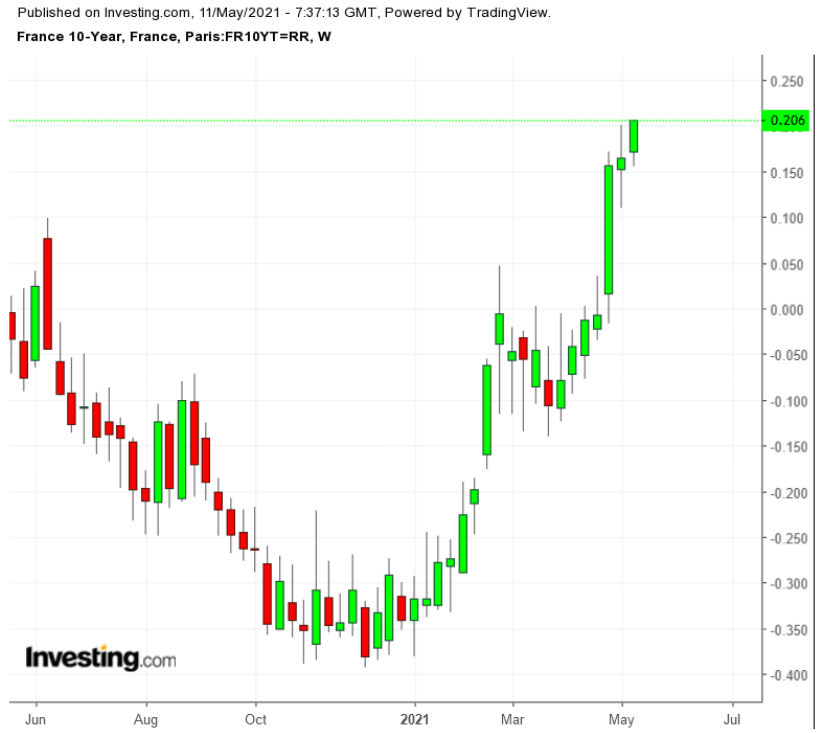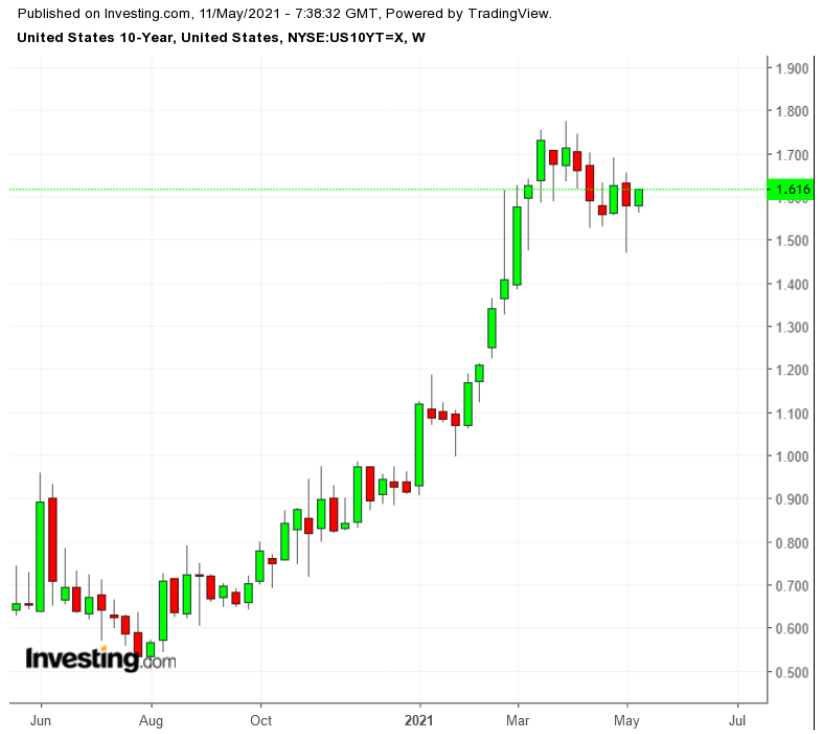German media started to speculate last week that the negative-interest phase in government bonds might be reaching an end as optimism about vaccines and an economic rebound have prompted investors to sell the bonds.
Yield on the benchmark 10-year German bond hit a 12-month high of nearly minus 0.16%, some 40 basis points higher than the minus 0.6% at the beginning of the year.

A correction in the stock market subsequently drove the yield down to nearly minus 0.25%, and now it is leveling out at a tick below minus 0.2%.
Still, it’s looking a lot like light at the end of the tunnel. Yields have steadily declined since 2009, as the 10-year sported more than a positive 4% at the time before hitting a low of minus 0.9% in March of last year. Yields have been negative for about two years.
France, meanwhile, issued €6.8 billion of 10-year bonds priced to yield a 0.13%—the first time for a positive yield at issue for nearly two years.

Some French government bonds had poked into positive territory last spring, but having a 10-year yielding a positive number at issue goes back to June 2019.
While the bigger EU countries try to raise their bond yields out of negative territory, Greece, which teetered on the edge of bankruptcy just six years ago, is driving yields down to zero. An issue last week of €3 billion in five-year bonds was oversubscribed more than six times and priced to yield just 0.2%.
The demand is not so hard to understand even though ratings agencies still have Greek sovereign bonds below investment grade and the country’s total debt is proportionally the highest in the eurozone at more than 200% of GDP.
Much of that debt is held by public sector entities and is very long-term. The emergency asset purchase program of the European Central Bank is expected to buy as much as €12 billion of Greek sovereigns this year—which coincidentally is the amount Athens intends to borrow.
Germany is getting ready to issue a 30-year green bond, perhaps as early as today [Tuesday] and should meet with solid demand, since its first two green bond issues of 10-years and five-year did well. Berlin twins its green bond issues with conventional bonds of the same maturity to allay any concerns about liquidity. Further green bond issues are planned for September and October.
On the other side of the Atlantic, yields on the benchmark 10-year Treasury note rose above 1.6% Monday after dipping on Friday with a jobs report that came in much lower than expected.

Investors are responding to a positive economic outlook and are also concerned that the Federal Reserve may be overly optimistic about inflation.
Market measures of inflation have increased some 5 bps since late last week, with the five-year breakeven at 2.73% on Monday, a 10-year high, and the 10-year above 2.5%. However, some analysts are beginning to question the reliability of these measures because they use the illiquid Treasury inflation protected securities (TIPS) as a base, which may distort the reading. They fear inflation expectations should be higher.
Reports this Wednesday on the consumer price index and Thursday on the producer price index should shed some light on the inflation trajectory.
The U.S. Treasury has a heavy borrowing schedule this week, with auctions of $58 billion of three-year notes on Tuesday, $41 billion of 10-year notes on Wednesday, and $27 billion of 30-year bonds on Thursday. The supply flood could also push yields higher.
